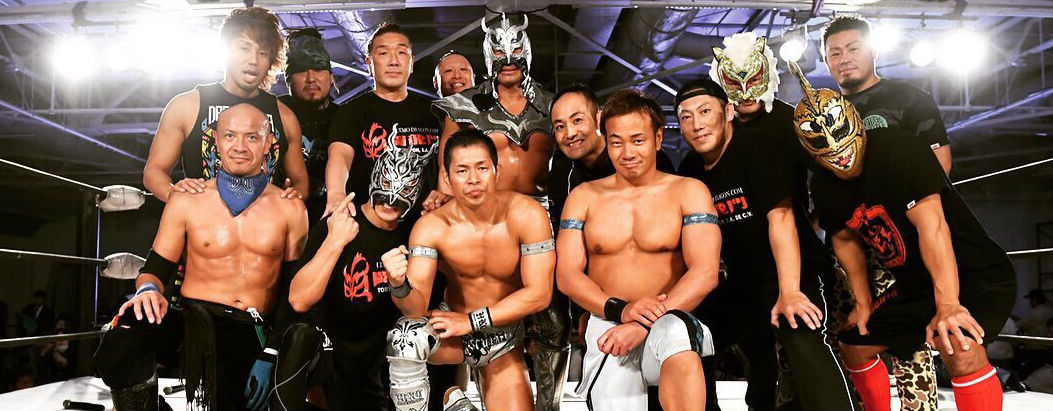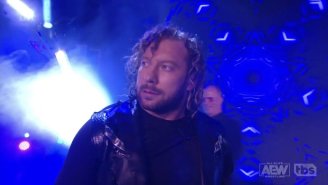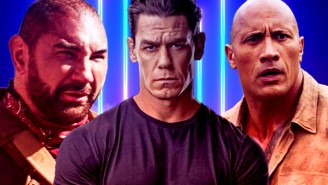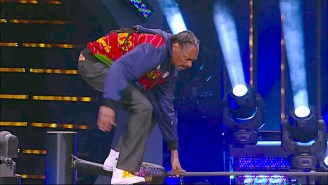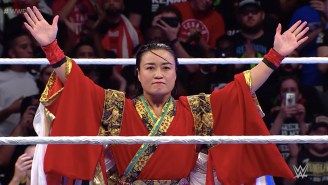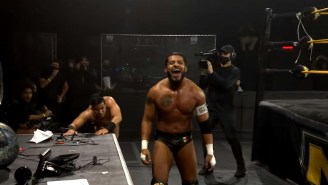In 2020, Dragon Gate turns twenty-one. Since it was founded by Último Dragón, it has put on thousands of shows, made its mark internationally, and spent two decades as one of Japan’s most creative wrestling promotions. To celebrate, Dragon Gate will turn back the clock to the first five years of its existence it spent as Toryumon with a reunion show on January 31 that will include the return of old gimmicks and wrestlers. The event should be a few hours of fun and nostalgia, but the road to it was long and strenuous, paved by years of hard work, major backstage changes, and an emotional homecoming after a fifteen-year absence.
Torymon began in 1997 when Último Dragón, while working for WCW, decided to open up a wrestling school in Mexico. The Último Dragón Gym provided the opportunity for young Japanese wrestlers to learn the lucha libre wrestling style like its founder had earlier in his career, and the Toryumon promotion gave the Gym’s students a platform on which to perform.
Naruki Doi, 39, currently holds Dragon Gate’s top title, the Open the Dream Gate Championship, and made his wrestling debut for Toryumon in 2000. He says living and training in Mexico is what he’s most proud of from his early career, telling UPROXX (through a translator) that, “I’m proud of living in Mexico for nearly three years and debuting as a pro wrestler. The experience I gained surviving in an unknown environment helped make me resilient both physically and mentally.”
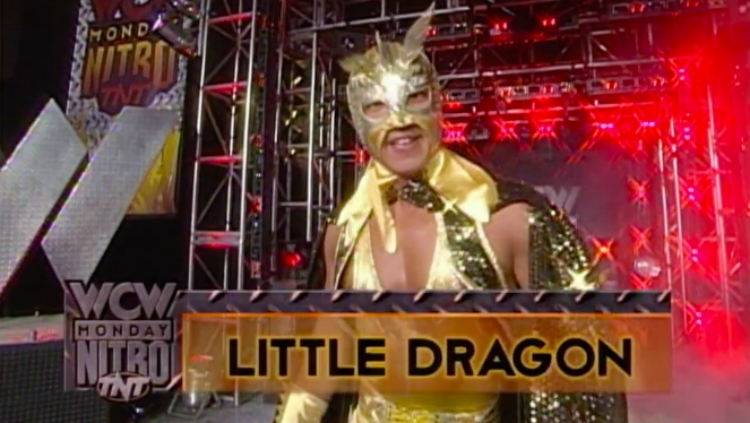
Through Último Dragón’s connections in the lucha libre world and in WCW, his students had opportunities to work with renowned wrestlers early in their careers. Dragon Kid, 43, one of the gym’s earliest graduates, describes his 1998 match with Eddie Guerrero on WCW Monday Nitro as the thing he’s most proud of from his Toryumon career. Genki Horiguchi, 41, says what he values most looking back on the Toryumon era is that he “was able to have matches with lucha libre legends like Blue Panther, Pantera, Último Guerrero, etc., while in Mexico. Without Toryumon that would have never been possible.”
The list of Toryumon graduates is an impressive one that includes wrestlers who went on to make names for themselves in Dragon Gate, in other Japanese promotions like Pro Wrestling NOAH and New Japan Pro Wrestling, and internationally. Cima, Magnum Tokyo, Don Fujii, Masato Yoshino, Susumu Yokosuka, Stalker Ichikawa, Milano Collection A.T., Taiji Ishimori, and Kazuchika Okada all started their careers under the tutelage of Último Dragón. The company’s influence, however, extends beyond its training school.
On January 31, 1999, Toryumon officially began operating as a promotion in Japan, and it was a hit. Its shows provided an entertaining mix of fast-paced, lucha libre-influenced wrestling; impressive athleticism; and memorable characters engaged in dramatic storylines that often focused around faction warfare. The events and matches, which some wrestling fans outside of Japan saw through tape trading, still look and feel unique today. The influences from American and Japanese pro wrestling and the lucha libre world are easy to identify, but in a way that makes Toryumon wrestling feels like its own thing rather than a hodgepodge of tributes and references.
The Dragon Gate athletic and aesthetic house style is still basically the same today, though Dragon Kid says the promotion’s characters are now less over-the-top and “more of an extension of the person rather than a gimmick.” But though creatively there wasn’t a huge change between the Toryumon and Dragon Gate eras of the company, the behind-the-scenes aspect of the split is a part of what makes the Toryumon reunion show and the circumstances that led to it a big deal.
Many details about the changes the company went through in 2004 are sketchy, and the wrestlers interviewed for this article would not take questions about them. The basic story is that after Último Dragón went to work for WWE full time in 2003, he returned to his home country in 2004 and separated himself from the Japanese branch of Toryumon (Toryumon Mexico continued to operate for years.)
Dragón had already stepped down from his position as director of the promotion before he started working for WWE and Toryumon had continued to operate in his absence, but Último owned the company’s name and logo, and he took those with him. After its founder left, the promotion basically changed its name as little as possible: “Toryumon” literally translates to, “Fighting Dragon Gate,” a homonym for a Japanese phrase that means, “gateway to success.”
Over the next fifteen years, Dragon Gate found success without the man who created the gateway, building more memorable feuds and characters, holding some events in Japan attended by over 10,000 people, and putting on lots of great matches. According to Ryo Saito, who began his career in Toryumon in 1999, says an important factor in the company’s success has always been backstage morale and organization. “The wrestlers and staff all have their own clearly defined roles behind the scenes,” says Saito, 40. “Each department works together and has a clear understanding of what the company wants to be. The attitude that everyone is working together to make the company bigger and better has not changed.”
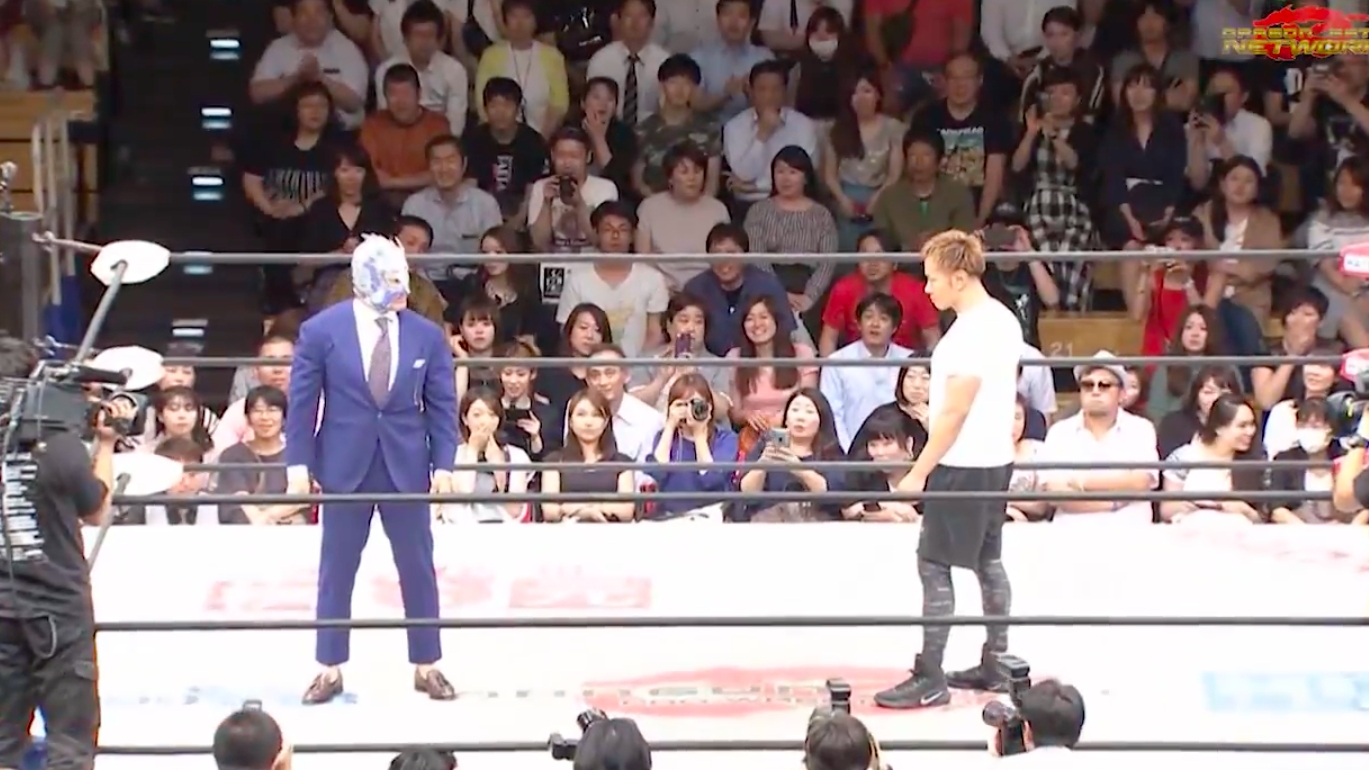
As Dragon Gate celebrated its twentieth anniversary in 2019, a major change was set in motion with a storyline that called back to the company’s beginning when Masato Yoshino got on the microphone during a show and asked Último Dragón to come wrestle at Kobe Pro Wrestling Festival, Dragon Gate’s biggest show of the year. Yoshino’s request was supported by most of the roster and a month before Kobe World, he made it again. This time, his speech was followed by the lights in the venue going out, and when they turned on again, Último Dragón was standing in the ring, returning to the company he founded for the first time in fifteen years, and the first time since it became Dragon Gate.
The 53-year-old junior heavyweight legend wrestled his first Dragon Gate match at Kobe Pro Wrestling Festival in July 2019, teaming with Yoshino and Dragon Kid against Masaaki Mochizuki, Shuji Kondo, and Takuya Suguwara – a match made up entirely of former Toryumon wrestlers (though not all students of Último Dragón; Mochizuki was probably the promotion’s biggest star to from outside the training system.) It was an emotional six-man tag, made more so by Genki Horiguchi openly weeping as he sat in on commentary. Over the following months, Último Dragón continued to wrestle in Dragon Gate and elsewhere, and at a show in September, in another very emotional moment, he announced that he was making Dragon Gate his home promotion.
Último Dragón wasn’t available to comment for this article, but some of his former students opened up about how they came to start working with him again. According to Horiguchi, “The desire to have our teacher come back was very strong among the Toryumon generation wrestlers. We told him out we felt, and he accepted the offer. Our wish became reality and I couldn’t be more grateful.”
Dragon Kid was similarly gracious, saying, “If there was no Ultimo Dragon, there would have been no Toryumon or Dragon Gate. None of the wrestlers or staff would be where they are today. After fifteen years away, we wanted another chance to wrestle with him.”
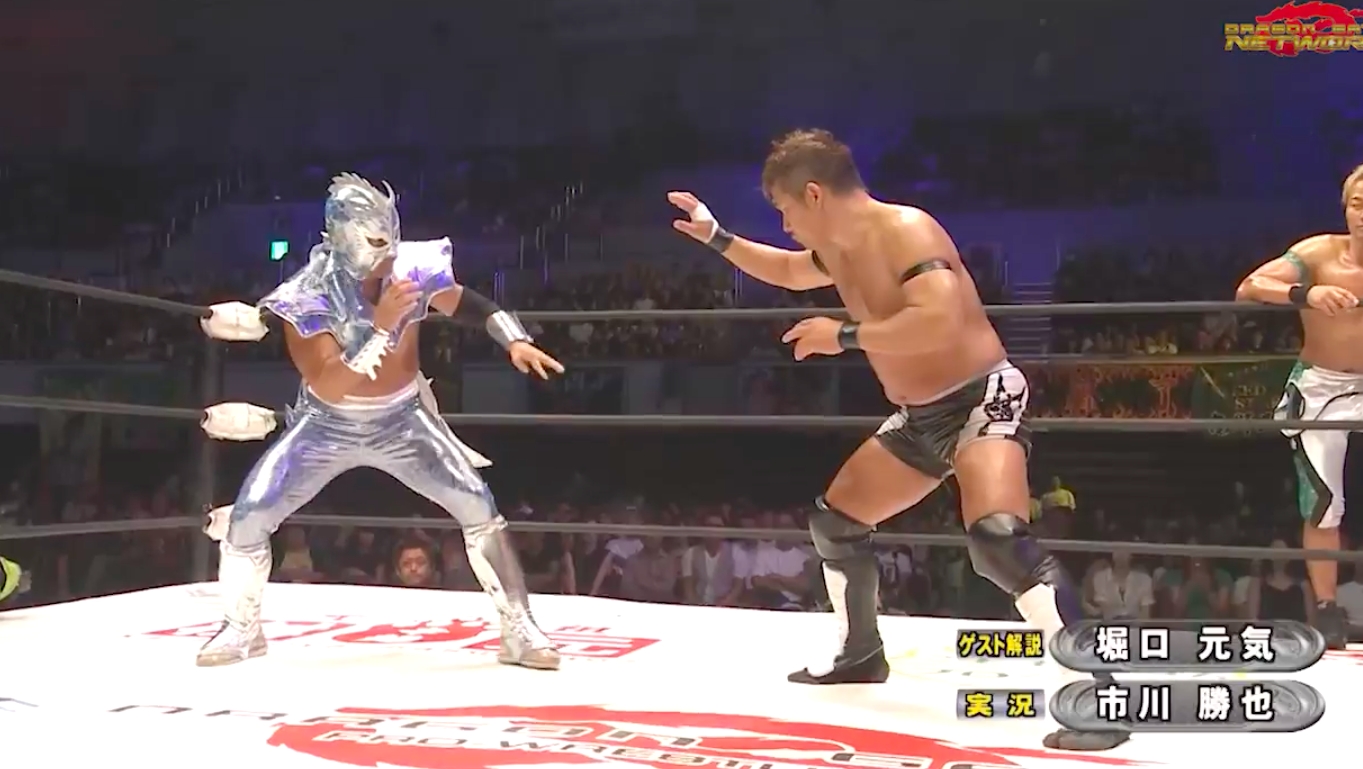
In his first Dragon Gate match, Ultimo Dragon prepares to lock up with Masaaki Mochizuki.
On October 8, 2019, the next major event in the Último Dragón-Dragon Gate relationship occurred: it was announced that a Toryumon reunion show would take place on January 31, 2020, twenty-one years to the day from when the company was founded. The show will be available to watch live and on-demand on the Dragon Gate Network streaming service (with Larry Dallas and interpreter Jae Church providing an English-language commentary option) with a 1500 yen subscription.
Doi says putting on the show “was Último Dragón’s decision. With his return to Dragon Gate, it created a time and place to finally gather his pupils together.” Horiguchi gives a similar explanation, saying that after the twentieth anniversary of the company and Último Dragón’s return “the decision was made to have a class reunion type of event” because “although Toryumon alumni have been together before in various promotions, there are still so many other students of Último Dragón out there.”
Dragon Kid also cited the anniversary and his mentor’s return before talking about what he hopes the event will mean for the fans as well as the wrestlers. “Dragon Gate has its roots in Toryumon, and those of us that are products of Toryumon wanted to bring it back one more time for the fans to enjoy.” He adds later that, “We hope to create an atmosphere that both fans since the Toryumon days and fans that only know Dragon Gate will be able to enjoy.”
At the time this article was written, one match had been announced for the Toryumon reunion: Ryo Saito vs. Genki Horiguchi. Like the other wrestlers on the show, they’ll be revisiting their gimmicks from fifteen to twenty years ago, meaning Saito will show up as a cyclist and Horiguchi as a surfer. It’s a fun-looking match for anyone who’s seen these two wrestle before, but it’s also a reminder the Toryumon wrestlers can’t completely turn back the clock.
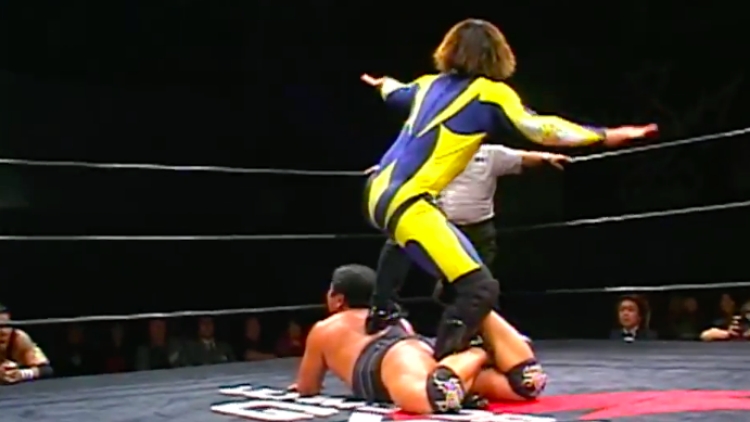
Though Horiguchi could easily bring back his old wetsuit-style ring gear, he won’t be able to completely recreate the look he had when he was twenty years old. The shaggy, dyed-blonde hair that used to compliment his surfer gimmick is now long gone; Horiguchi started balding fairly young and incorporated that into his wrestling persona with a baldness-fueled heel turn and a signature chant of “H-A-G-E!” (spelling out “hage,” the Japanese word for “bald.”)
More seriously, Horiguchi says he thinks the biggest change he’s gone through as a wrestler since the Toryumon days is that, “I’ve had to change my in-ring style as I get older.” He acknowledges that’s true of wrestlers in all promotions, but for him, this is a case of slowing down while, “the fast-paced Dragon Gate style has not changed. I’ve been able to rely on my experience, but the physicality takes its toll.”
The long list of names announced for the Toryumon reunion includes wrestlers who currently work for Dragon Gate (Don Fujii, Kagetora, K-ness, Super Shisa, Konomama Ichikawa (the recently unmasked Stalker Ichikawa)) and many who wrestle elsewhere like Toru Owashi and Takashi Minamino. The reunion of two popular Toryumon-era factions has also been promoted: M2K (Mochizuki, Susumu Yokosuka using his former ring name of Susumu Mochizuki, and Yasushi Kanda) and the fashion-themed Italian Connection (“brother” YASSHI as “brother YASSINI, Tsutomu Oosugi as Milanito Collection a.t., and Shuji Kondo as Condotti Shuji.)
But fans of Toryumon will notice some notable absences from the lineup, and the Toryumon reunion won’t be a complete one (at least, as far as anyone knows right now) because of two factors that often influence pro wrestling: injuries and industry politics. Two major figures in the promotion have retired due to injuries since Toryumon ended: Magnum Tokyo in 2009 and Italian Connection founder Milano Collection A.T. in 2010. Tokyo hasn’t been part of the wrestling business since his retirement, while Milano is currently the best-dressed commentator in New Japan Pro Wrestling, the promotion he left Dragon Gate for in the mid-2000s.
A former Toryumon star who might be even less likely to make an appearance at the reunion is Cima, though he’s still an active wrestler. In the spring of 2018, Cima started working with the new Chinese promotion Oriental Wrestling Entertainment, taking Dragon Gate wrestlers Takehiro Yamamura, T-Hawk, and El Lindaman with him. Before the move, he had been named Dragon Gate’s president of international business in one of a series of internal changes that included Toru Kido replacing Takashi Okamura as the company’s executive director.
Dragon Gate never officially announced that Cima left the company, but since DG wrestlers performed on OWE’s first show back in 2018, the promotions haven’t interacted. Cima and his Stronghearts group have since wrestled for other promotions in Japan, and though former Dragon Gate wrestlers who now work elsewhere (Akira Tozawa and Apollo Crews in WWE, Shingo Takagi in NJPW) recorded video messages that played on Dragon Gate’s twentieth-anniversary tour, there was no word from those who had departed to China.
As with the 2004 split, Dragon Gate employees would not take questions about what happened with Cima and OWE, but at the press conference announcing the Toryumon show, they addressed that it wouldn’t be a complete reunion. They said they wouldn’t be contacting wrestlers who had caused problems in the past and acknowledged that some former Toryumon performers are now retired and out of the public eye or have contracts elsewhere that could prohibit them from taking part. The focus was going to be on making this the best show possible with the talent who could come without any issues, and they left open the possibility of putting on another Toryumon show in the future including wrestlers who couldn’t come this time around.
While the Toryumon reunion is being promoted as a night of fun and nostalgia and produced in a way meant to avoid real-life drama, the return of Último Dragón and the cooperation between his former students is a point of contention in the fictional world of Dragon Gate. As the former Toryumon wrestlers bonded during the promotion’s twentieth year, heel faction R.E.D. gained championships and new members.
明日は2019最終戦!神戸サンボーホール大会!ドラゴンゲートネットワークLIVE配信! https://t.co/55KGgubEyJ #DragonGate
@BxBHulk0715 @Eita_Luchador pic.twitter.com/k9brkQlZms— DRAGONGATE NETWORK (@dragongatentwk) December 25, 2019
When one of the company’s top post-Toryumon babyfaces, BxB Hulk, turned on his friend and co-tag-champion Yamato in December, it incited nearly all the non-heels who had joined Dragon Gate after 2004 to abandon their previous faction affiliations and band together. Their goal is to fight off R.E.D. and to prove they’ve surpassed the Toryumon generation, establishing themselves as the present and future of Dragon Gate. There are a few free agents in the mix, but almost every wrestler in the company is now on Team Toryumon, Team Dragon Gate, or in R.E.D., with a Toryumon wrestler (Doi) holding the company’s top title and R.E.D. in possession of all the other championships.
The Toryumon reunion show is a platform for older wrestlers, but it takes place in a context that acknowledges the hunger of the younger generation to make their own mark on the future. The future can’t and probably shouldn’t be stopped, but on January 31, Dragon Gate will spend a few hours sixteen to twenty-one years in the past.

